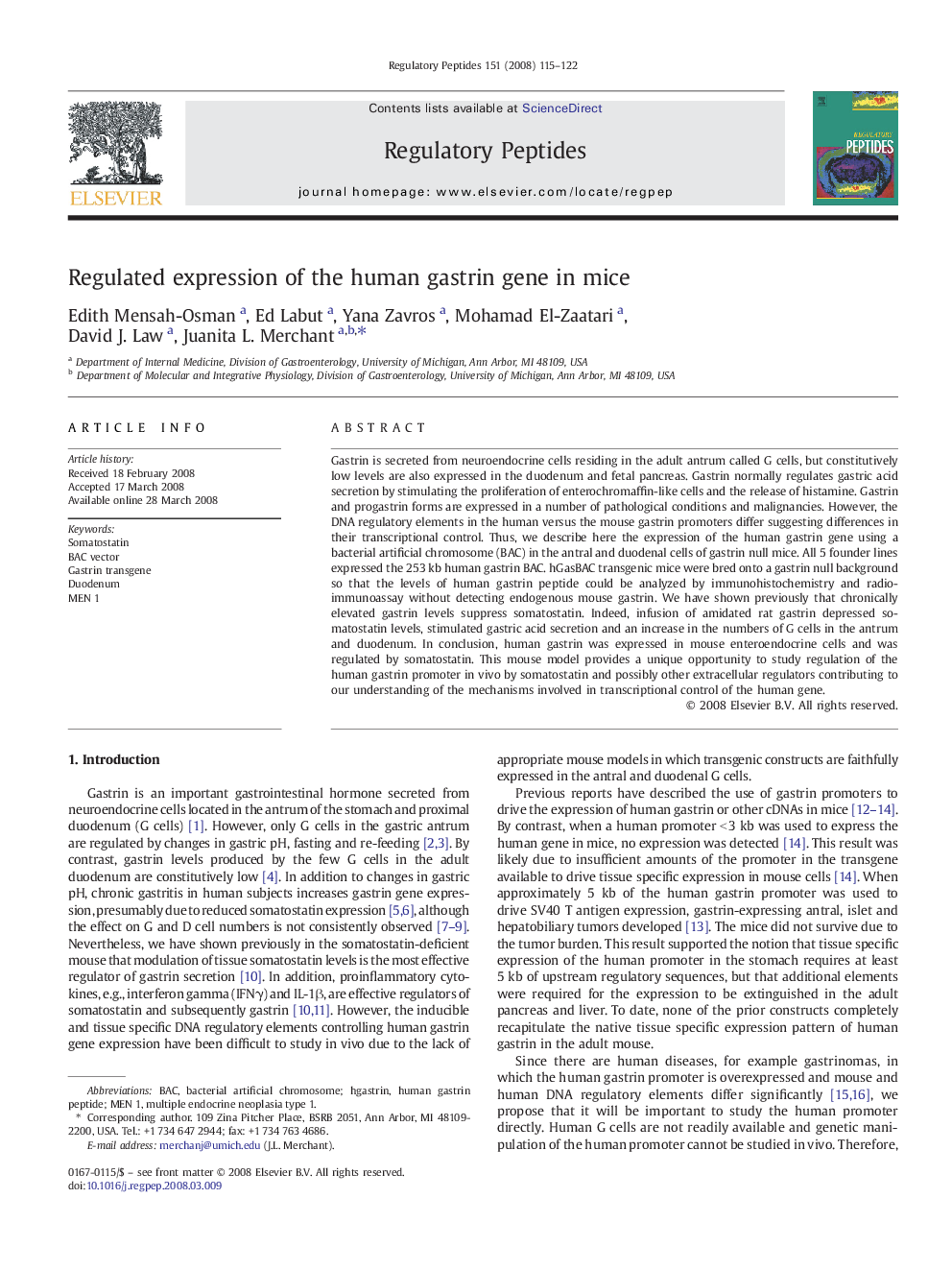| Article ID | Journal | Published Year | Pages | File Type |
|---|---|---|---|---|
| 2023030 | Regulatory Peptides | 2008 | 8 Pages |
Abstract
Gastrin is secreted from neuroendocrine cells residing in the adult antrum called G cells, but constitutively low levels are also expressed in the duodenum and fetal pancreas. Gastrin normally regulates gastric acid secretion by stimulating the proliferation of enterochromaffin-like cells and the release of histamine. Gastrin and progastrin forms are expressed in a number of pathological conditions and malignancies. However, the DNA regulatory elements in the human versus the mouse gastrin promoters differ suggesting differences in their transcriptional control. Thus, we describe here the expression of the human gastrin gene using a bacterial artificial chromosome (BAC) in the antral and duodenal cells of gastrin null mice. All 5 founder lines expressed the 253Â kb human gastrin BAC. hGasBAC transgenic mice were bred onto a gastrin null background so that the levels of human gastrin peptide could be analyzed by immunohistochemistry and radioimmunoassay without detecting endogenous mouse gastrin. We have shown previously that chronically elevated gastrin levels suppress somatostatin. Indeed, infusion of amidated rat gastrin depressed somatostatin levels, stimulated gastric acid secretion and an increase in the numbers of G cells in the antrum and duodenum. In conclusion, human gastrin was expressed in mouse enteroendocrine cells and was regulated by somatostatin. This mouse model provides a unique opportunity to study regulation of the human gastrin promoter in vivo by somatostatin and possibly other extracellular regulators contributing to our understanding of the mechanisms involved in transcriptional control of the human gene.
Keywords
Related Topics
Life Sciences
Biochemistry, Genetics and Molecular Biology
Biochemistry
Authors
Edith Mensah-Osman, Ed Labut, Yana Zavros, Mohamad El-Zaatari, David J. Law, Juanita L. Merchant,
